The Hanging Church: A Fascinating Place of Worship in Cairo
Cairo, the bustling capital of Egypt, is home to a treasure trove of historic landmarks, one of which is the Hanging Church, also known as the Church of the Virgin Mary. Situated in Old Cairo, this magnificent place of worship has a fascinating history that dates back centuries. From its unique architectural design to its significance in the Coptic Christian Church, the Hanging Church is a must-visit destination for those seeking to explore Cairo's cultural and religious heritage.
Join us as we delve into the captivating story of this iconic church and discover the wonders it holds within its walls.
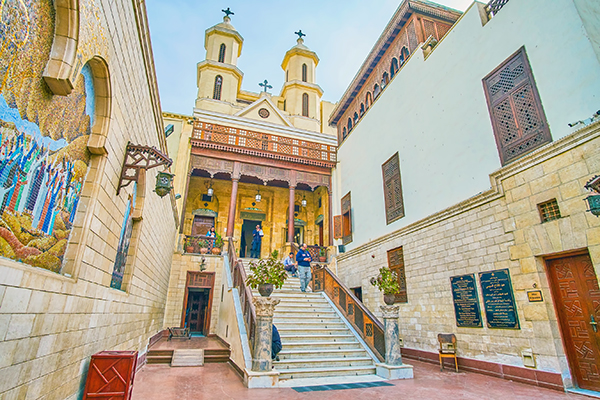
Overview of the Hanging Church and its historical significance
The Hanging Church, also known as the Church of the Virgin Mary, is one of the most historically significant places of worship in Cairo, Egypt. Located in the Coptic Cairo district, this church has a rich history dating back to the 3rd century AD.
Built on top of the southern gate of the Roman fortress of Babylon, the Hanging Church is renowned for its unique architectural design. The church features a suspended nave, which makes it appear suspended in mid-air. This architectural marvel showcases the ingenuity of the early Coptic Christians.
The Hanging Church has witnessed numerous notable events and renovations throughout its history. It has served as a platform for important religious ceremonies and has played a significant role in developing and preserving Coptic Christianity.
The Hanging Church is not only important for its historical and religious significance but also for its stunning artwork and decorations. The church is adorned with intricate carvings, beautiful icons, and vibrant frescoes, which provide a glimpse into the rich artistic heritage of the Coptic community.
Today, the Hanging Church continues to be an active place of worship, attracting locals and tourists alike. Its cultural and historical significance, breathtaking architecture, and artwork make it a must-visit destination for anyone exploring Cairo. Efforts are being made to preserve and maintain this iconic landmark, ensuring that future generations can experience its beauty and historical significance.

History of the Hanging Church
Origins and architectural features of the Hanging Church
The Hanging Church, also known as the Saint Virgin Mary's Coptic Orthodox Church, is a famous place of worship in Cairo, Egypt. Its origins can be traced back to the 3rd century, making it one of the oldest churches in Egypt and the first built on top of the ruins of a Roman fortress.
The church gets its name from its unique position, as it is raised above street level, supported by the ruins of the Babylon Fortress. The Hanging Church's architectural features blend different styles, including Coptic, Byzantine, and Persian influences. The church is characterized by its wooden roof, marble columns, and intricate carvings. The interior is adorned with beautiful icons and murals depicting biblical scenes and saints.
The Hanging Church is a place of worship, an architectural marvel, and an important cultural landmark in Cairo.
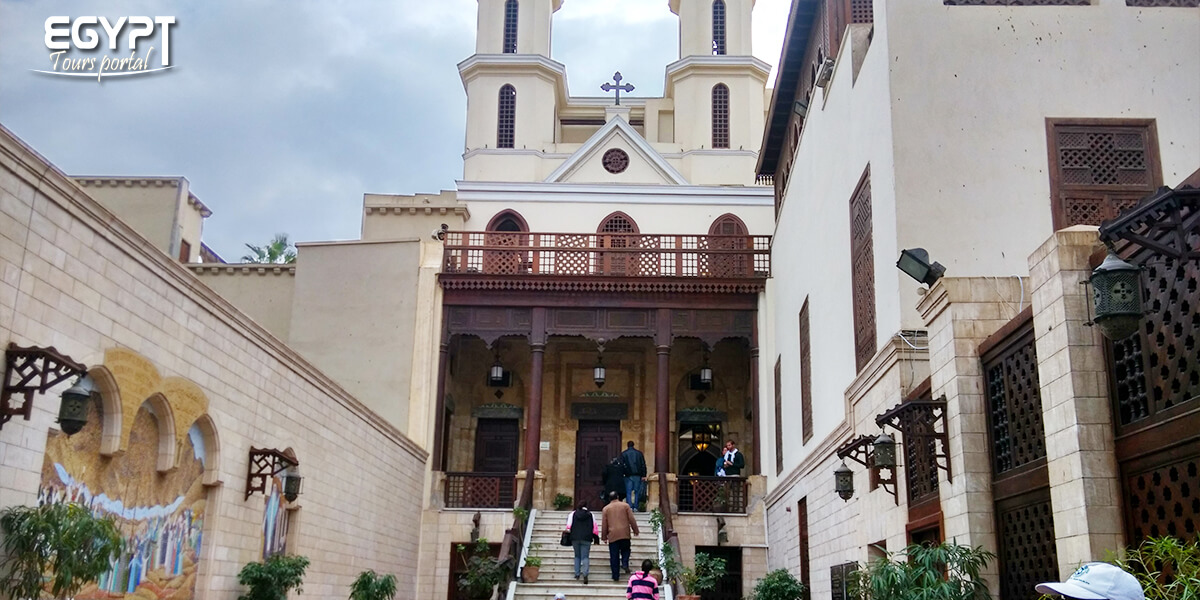
Notable events and renovations throughout history
Throughout its long history, the Hanging Church has witnessed numerous notable events and renovations that have shaped its current form. One such event occurred in the 12th century when a fire damaged the church. Subsequently, it underwent significant restoration works, including the addition of several beautiful frescoes and murals.
In the 19th century, the Hanging Church underwent another major renovation under the direction of renowned architect Max Herz Bey. This restoration project aimed to preserve the church's unique architectural features while incorporating modern elements, resulting in a harmonious blend of old and new.
Another notable event in the history of the Hanging Church occurred in the late 20th century when UNESCO officially recognized it as a World Heritage Site. This recognition further highlighted the cultural and historical significance of the church, attracting visitors from around the world.
To this day, efforts are ongoing to preserve and maintain the Hanging Church. Regular maintenance and restoration works are carried out to ensure that its architectural integrity and cultural heritage are preserved for future generations to appreciate.
Overall, the notable events and renovations throughout history have played a crucial role in shaping the Hanging Church into the magnificent place of worship it is today.
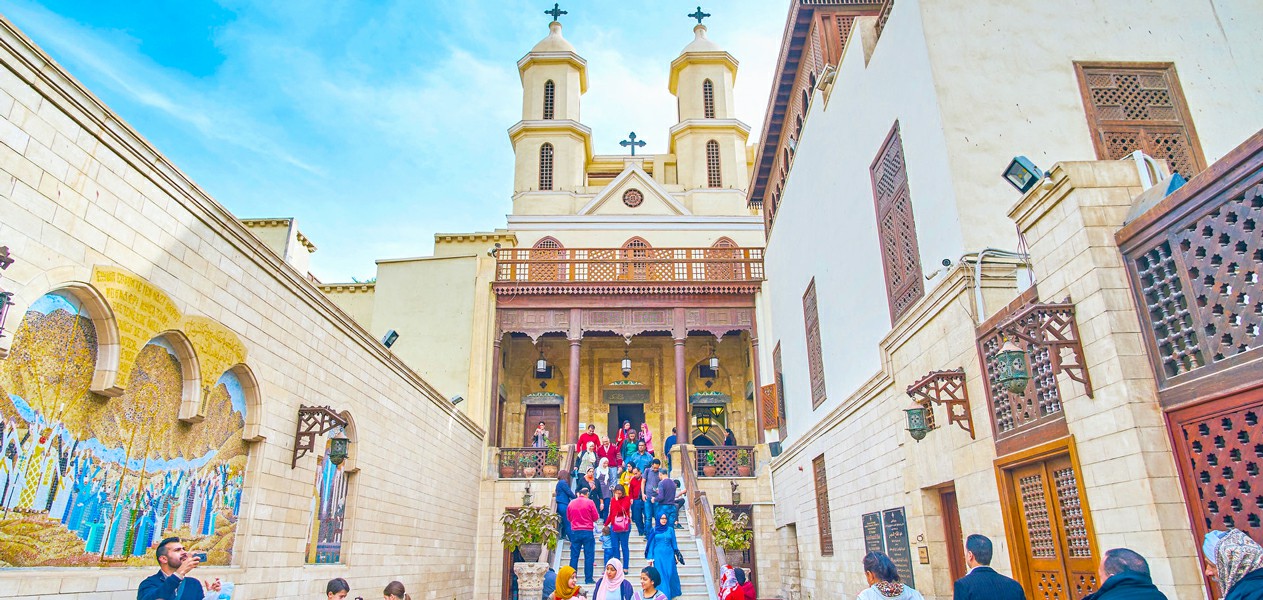
Religious Significance
Importance of the Hanging Church in Christianity
The Hanging Church, also known as the Church of St. Virgin Mary, holds immense importance in Christianity. It is one of Cairo, Egypt's oldest and most significant Coptic churches. The church holds a strong historical and religious significance for the Coptic Christian community and symbolises their enduring faith amidst the changing times.
The Hanging Church is considered the spiritual heart of the Coptic Orthodox Church and the Coptic Pope's seat. It is a place of worship and serves as a centre for religious and cultural activities. The church has witnessed centuries of prayers, worship, and religious ceremonies, carrying with it the rich traditions and heritage of the Coptic Christian community.
Inside the church, visitors are greeted by beautiful icons, ancient manuscripts, and intricate artwork that depict scenes from the Bible and the life of Jesus Christ. The breathtaking beauty and serenity of the church create a spiritual atmosphere that draws in both locals and tourists alike.
The importance of the Hanging Church in Christianity goes beyond its architectural and historical significance. It is a living testament to the enduring faith of the Coptic Christian community and serves as a beacon of hope and inspiration for believers. Its presence in Cairo's cultural landscape further enriches its diverse religious heritage.

Religious practices and ceremonies held at the church
Religious practices and ceremonies held at the Hanging Church play a significant role in the spiritual lives of the Coptic Christian community. The church serves as a prominent place of worship, where various religious rituals and ceremonies occur throughout the year. These practices uphold the traditions of the Coptic Orthodox Church and bring the faithful together in prayer and worship.
Here are some of the key religious practices and ceremonies held at the Hanging Church:
- Daily Mass: The Hanging Church holds daily Mass services, allowing worshipers to gather and participate in the Eucharist. These services are an essential aspect of the Coptic Orthodox faith and provide spiritual nourishment to the congregation.
- Major Feast Days: On significant feast days, such as Christmas and Easter, the Hanging Church hosts special services that attract many worshipers. These ceremonies include liturgical processions, prayer services, and hymns that celebrate the birth, death, and resurrection of Jesus Christ.
- Baptisms and Weddings: The Hanging Church is also a venue for significant life events, such as baptisms and weddings. These ceremonies are conducted according to the rich traditions of the Coptic Orthodox Church and hold great significance for the individuals and families involved.
- Religious Processions: The Coptic Orthodox Church places great importance on religious processions, and the Hanging Church is no exception. Processions carrying icons and relics are held on specific occasions, symbolizing the faith and unity of the community.
The religious practices and ceremonies held at the Hanging Church not only strengthen the spiritual bonds of the Coptic Christian community but also contribute to the preservation of the church's rich cultural and religious heritage.
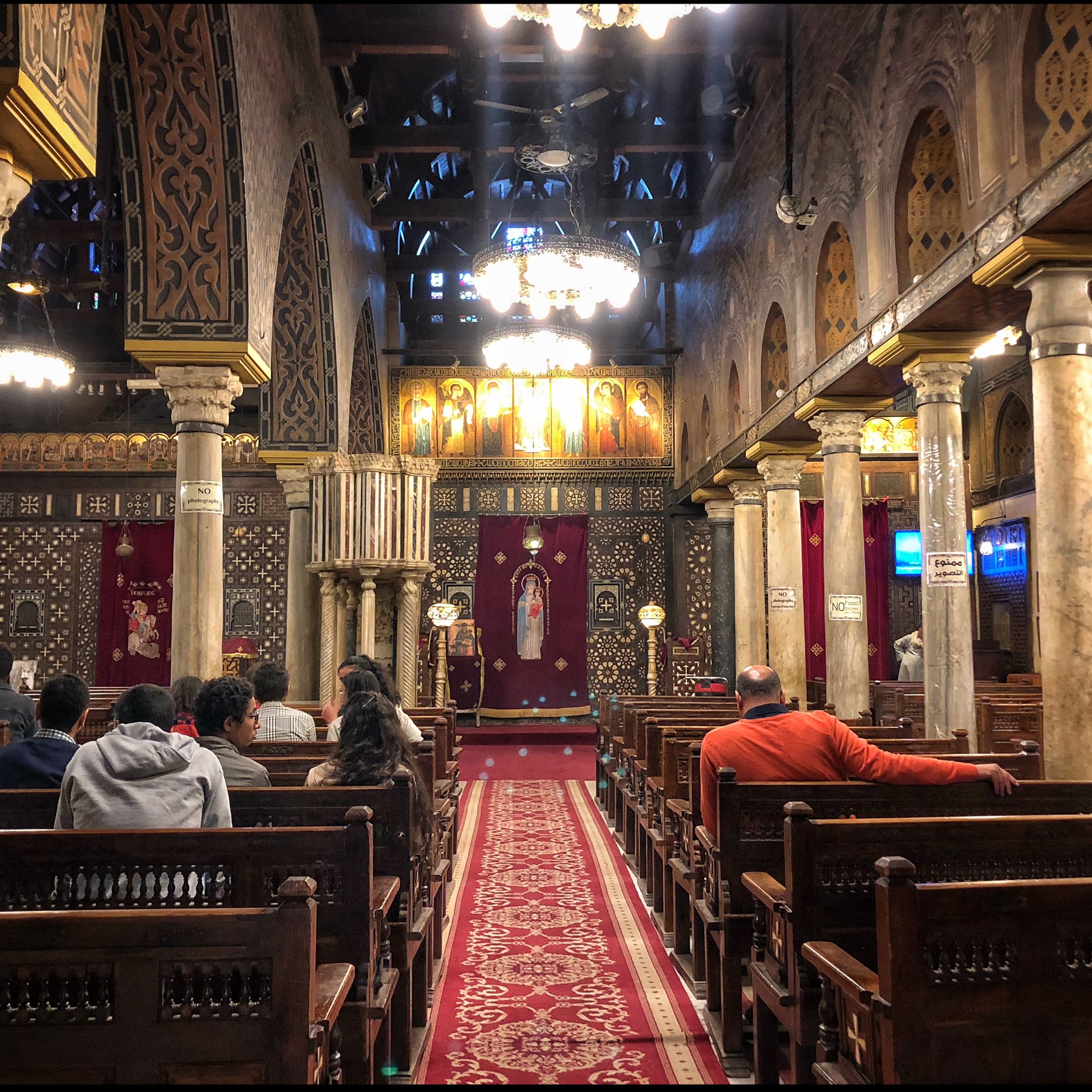
Architecture and Artwork
Exploring the unique architectural style of the Hanging Church
The Hanging Church in Cairo is renowned for its unique architectural style, which blends elements of Coptic, Byzantine, and Islamic design. Its distinctive features make it a captivating place to explore:
1. Basilica Design: The Hanging Church follows a basilica plan with three aisles separated by columns and covered by wooden roofs. This layout is reminiscent of early Christian churches and highlights the church's historical significance.
2. Suspended Structure: The church is known as the "Hanging" Church because it is suspended above the ground. This design prevents flooding from the Nile River, which historically caused damage to many other Coptic churches in the area.
3. Wooden Screens: Intricate wooden screens divide the nave from the side aisles, creating a sense of intimacy and privacy within the church. These screens are beautifully carved with geometric patterns and biblical scenes, adding to the overall visual appeal.
4. Iconostasis: The iconostasis, a wall of icons and religious paintings, is a prominent feature in the Hanging Church. It separates the nave from the sanctuary and is adorned with icons depicting saints, biblical scenes, and important figures in Coptic Christianity.
5. Stained Glass Windows: The church boasts stained glass windows that allow natural light to filter through, creating an ethereal atmosphere within the space. The vibrant colours and intricate designs add to the visual allure of the church.
Exploring the unique architectural style of the Hanging Church offers a glimpse into the rich history and cultural heritage of Cairo. Visitors can marvel at the blending of different architectural influences and appreciate the craftsmanship that created this remarkable place of worship.

Analysis of the intricate artwork and decorations within the church
The Hanging Church, also known as the Church of the Virgin Mary, is renowned for its historical significance and exquisite artwork and decorations. The intricate designs within the church reflect the rich cultural heritage of Coptic Christianity and provide visitors with a visual feast.
The artwork and decorations within the church showcase several notable features:
-
Iconography: The walls of the Hanging Church are adorned with numerous icons depicting biblical scenes and religious figures. These icons serve as visual representations of faith and play a vital role in Coptic worship.
-
Mosaic Art: The church features mesmerizing mosaic artwork that uses small, coloured tiles called tesserae. The mosaics depict various religious themes, including angels, saints, and biblical events, and are known for their intricate details and vibrant colours.
-
Wooden Screens: Elaborate wooden screens, and iconostases, separate the sanctuary from the main nave. These screens are intricately carved and often adorned with religious motifs and symbols.
-
Chandeliers and Lighting: The church is illuminated by stunning chandeliers that enhance the overall ambience of the space. The interplay of light and shadows adds depth and a sense of spirituality to the artwork and decorations within the church.
Visitors to the Hanging Church can marvel at the skill and craftsmanship that went into creating these intricate works of art, providing a deeper appreciation for the cultural and historical significance of this iconic place of worship in Cairo.

Cultural Heritage and Tourism
Impact of the Hanging Church on Cairo's cultural heritage
The Hanging Church, also known as the Church of the Virgin Mary, significantly impacts Cairo's cultural heritage. As one of the oldest churches in the city, dating back to the 4th century, it holds deep historical and religious importance. The church's existence and preservation over the centuries serve as a testament to the rich cultural fabric of Cairo.
The Hanging Church is a place of worship and a symbol of faith for Christians in Egypt. Its presence in the heart of Cairo showcases the country's religious diversity and tolerance. The church's architectural style, combining Roman, Byzantine, and Coptic influences, adds to Cairo's architectural landscape and reflects the city's historical evolution.
As a prominent tourist attraction, the Hanging Church welcomes visitors worldwide who appreciate its historical significance and its unique beauty. Tourists flock to the church to witness the intricate artwork, including beautiful mosaics and wooden furniture, that adorns its interior. The church provides a glimpse into Egypt's rich artistic heritage and its artisans' craftsmanship.
Preservation efforts have ensured the Hanging Church remains intact and accessible for future generations. These efforts include regular maintenance, restoration of damaged elements, and establishment of a visitor centre to educate and inform visitors about the church's historical and cultural significance.
Overall, the Hanging Church plays a vital role in Cairo's cultural landscape by preserving its rich history and heritage, offering a place of worship for Christians, and welcoming tourists who appreciate its architectural splendour and historical value.

Tourist attractions and experiences around the church
Visiting the Hanging Church offers tourists a unique, immersive experience combining history, culture, and spirituality. Located in the heart of Old Cairo, the church is surrounded by numerous other historical and religious sites, making it a must-visit destination for travellers. Some of the attractions and experiences around the church include:
-
Coptic Museum: Situated just a short walk from the Hanging Church, the Coptic Museum houses a vast collection of religious artefacts, manuscripts, and artwork that showcase the rich history of the Coptic Christian community.
-
Babylon Fortress: A historical site that dates back to ancient times, Babylon Fortress is located nearby and offers visitors the opportunity to explore the remnants of an ancient Roman fortress, and witness layers of history unfold.
-
St. Sergius and Bacchus Church: Adjacent to the Hanging Church, this ancient church is believed to be where the Holy Family found refuge during their flight to Egypt. It is a significant pilgrimage site for Coptic Christians.
-
Islamic Cairo: Just a short distance from the church, visitors can explore the vibrant streets of Islamic Cairo, filled with architectural marvels such as the Sultan Hassan Mosque and the Al-Rifa'i Mosque.
-
Local markets: The area surrounding the Hanging Church is home to bustling markets like Khan El Khalili, where visitors can immerse themselves in the vibrant atmosphere, shop for souvenirs, and sample local cuisine.
Overall, the Hanging Church serves as a gateway to many cultural and historically significant sites, providing tourists with a memorable and insightful experience.
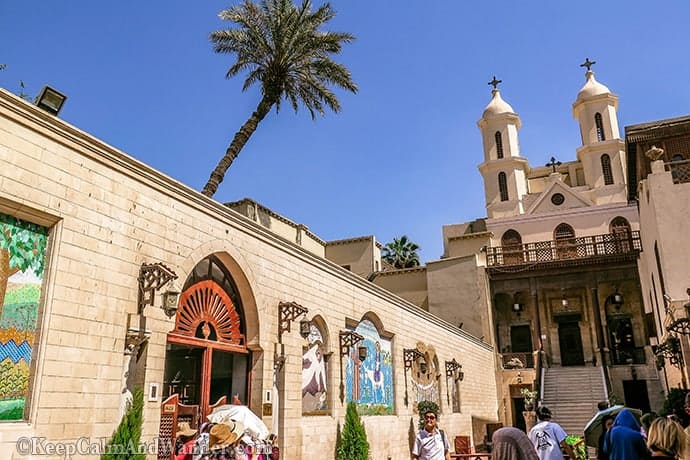
Preservation and Restoration Efforts
Efforts to preserve and maintain the Hanging Church
Efforts to preserve and maintain the Hanging Church have been ongoing to ensure its historical and cultural significance is preserved for future generations:
-
The Egyptian government has invested in restoration projects to repair and maintain the church's structure. These efforts include repairs to the rooftop, walls, and interior spaces to ensure the building remains structurally sound.
-
The Coptic community, which holds the church sacred, has been preserving its heritage. They have contributed financial resources and volunteers to support restoration projects and organize events that promote awareness of the church's significance.
-
International organizations such as UNESCO have recognized the importance of the Hanging Church and provided support for its preservation. This includes funding for restoration projects and technical expertise to meet cultural heritage standards.
-
The Hanging Church is now a designated tourist attraction in Cairo, and entrance fees contribute to the ongoing maintenance and conservation efforts. This revenue helps maintain the church, including regular cleaning and necessary repairs.
-
The church has also implemented measures to protect the artwork and decorations within the building. This includes the installation of protective barriers and climate control systems to minimize damage from environmental factors.
With these concerted efforts to preserve and maintain the Hanging Church, it continues to be a cherished place of worship and a historical landmark in Cairo.
